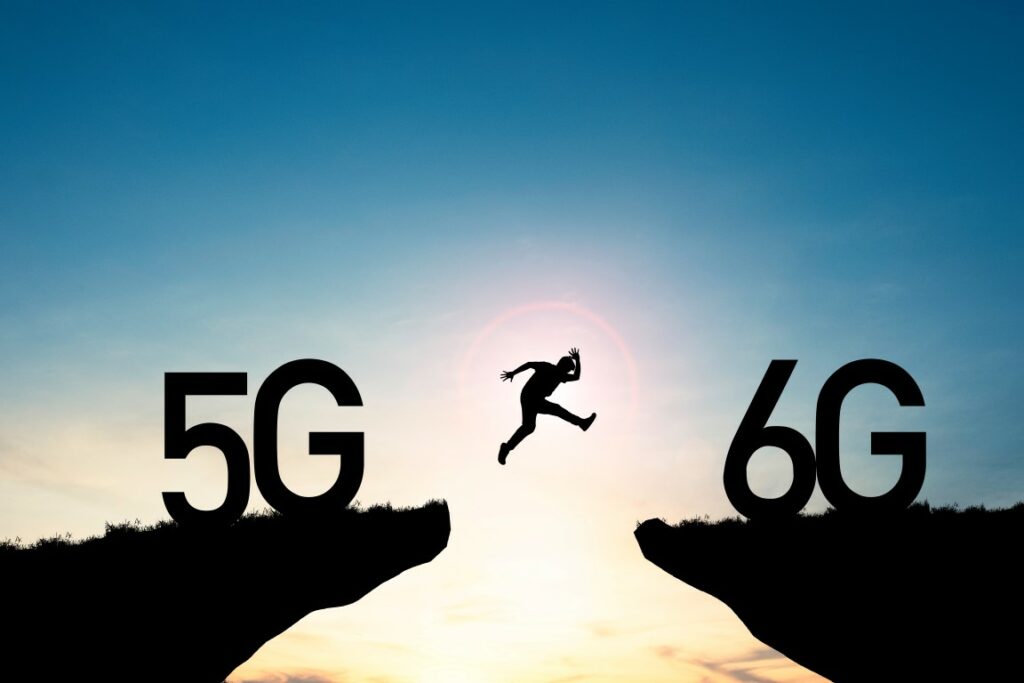According to Samsung, 6G will have ultra-wideband, ultra-low latency, ultra-intelligence, and ultra-spatialization, enabling “extreme” communication performance.
According to Sarah LaSelva, director of 6G marketing at Keysight Technologies, a wide range of technologies, including artificial intelligence, advanced sensors, optics, cloud computing, high-speed digital, satellite, and robotics, will undergo rapid advancement over the next decade, combining and augmenting to enable new use models made possible by 6G.

“In the area of communications, 6G will bring multi-sensory technologies to create new ways for people to interact with each other and with their surroundings, using not just sight and sound, but also touch, smell and taste. 6G will eliminate physical and temporal distance between people through holographic imaging, seamlessly connecting human-to-human and human-to-machine worlds.”
Sarah LaSelva
LaSelva also explained that networks will be powered by artificial intelligence, enabling fully automated infrastructure optimization and autonomous service provisioning. “There will be widespread use of digital twins, exact real-time replicas of physical processes, virtual models using past and present data with machine learning to dynamically monitor, improve, optimize and enhance many different processes,” she added.
In the meantime, Rohde & Schwarz’s technology manager, Andreas Roessler, believes that terahertz communication, joint communication and sensing (JCAS), artificial intelligence and machine learning, reconfigurable intelligent surfaces (RIS), and photonics/visible light communication (VLC) are among the technologies that will revolutionize the 6G era.
“JCAS may help improve the communication link while enabling more efficient beam management, beam alignment, and feedback of the channel state information collected by the receiver. It also will allow new use cases if environmental data can be communicated, such as gesture recognition, vulnerable road user detection, and human-machine interaction.”
Andreas Roessler
Additionally, Ian Wong, director of RF and wireless architecture at Viavi Solutions, says that JCAS is a prime example of a new technology that would be possible only with future 6G systems. Communication and sensing functions are performed concurrently in JCAS, allowing the network to provide sensing capabilities. According to Wong, a great deal of study is now being conducted in this subject.
According to Patrik Persson, 6G program manager and director at Ericsson, a fundamental use case Ericsson anticipates for the future is traveling along a cyber-physical continuum, between a programmable digital representation of the real world of sensing, action, and experiences. A digitalized and programmable world can provide interactive 4D maps of entire cities that are precise in position and time and can be viewed and edited simultaneously by a large number of humans and intelligent machines for thorough activity planning. Persson stated that such cyber-physical service platforms can deliver commands to steerable systems such as public transportation, trash management, or water and heating management systems, thereby increasing resource efficiency.
According to Samsung’s vision, 6G will feature ultra-wideband, ultra-low latency, ultra-intelligence, and ultra-spatialization, which will support extreme communication performance and enable truly immersive extended reality (XR), high-fidelity mobile holograms, and digital replicas at any time and place.
“With the 6G era expected to connect as many as 500 billion machines, we’ll see vehicles, appliances, and even the buildings around us being connected to this super-fast communications network. We’re already seeing today how XR devices and services such as VR and AR are being used, and digital replication technology is being harnessed in industrial IoT. In a world where 6G technology is universal, those truly immersive XR services and other advanced applications like high-fidelity mobile holograms will begin to emerge.”
Sunghyun Choi, head of advanced communications research center at Samsung Research.
Choi also mentioned that the 6G network pieces will be intended to be fully softwarized, virtualized, and reprogrammable in a cloud environment.
Previously, ATIS’s Next G Alliance has published a paper detailing the use cases and applications for the future 6G network. The report presents four areas of use cases: network-enabled robotics and autonomous systems, multisensory extended reality, distributed sensing and communications, and personalized user experiences.
Source: RCR Wireless
































